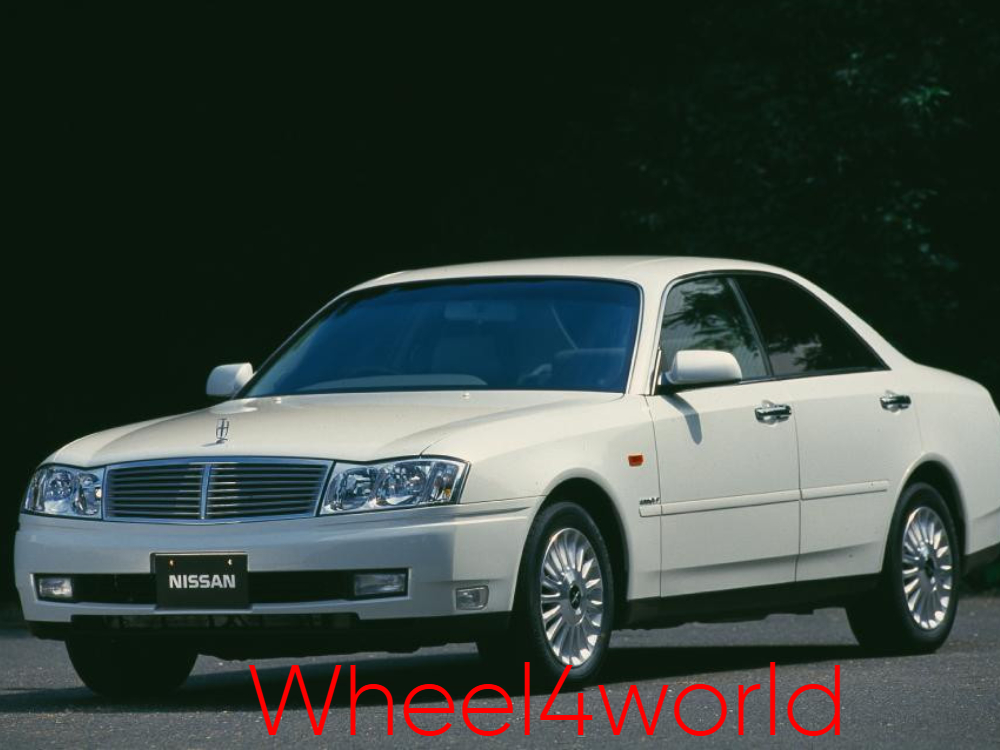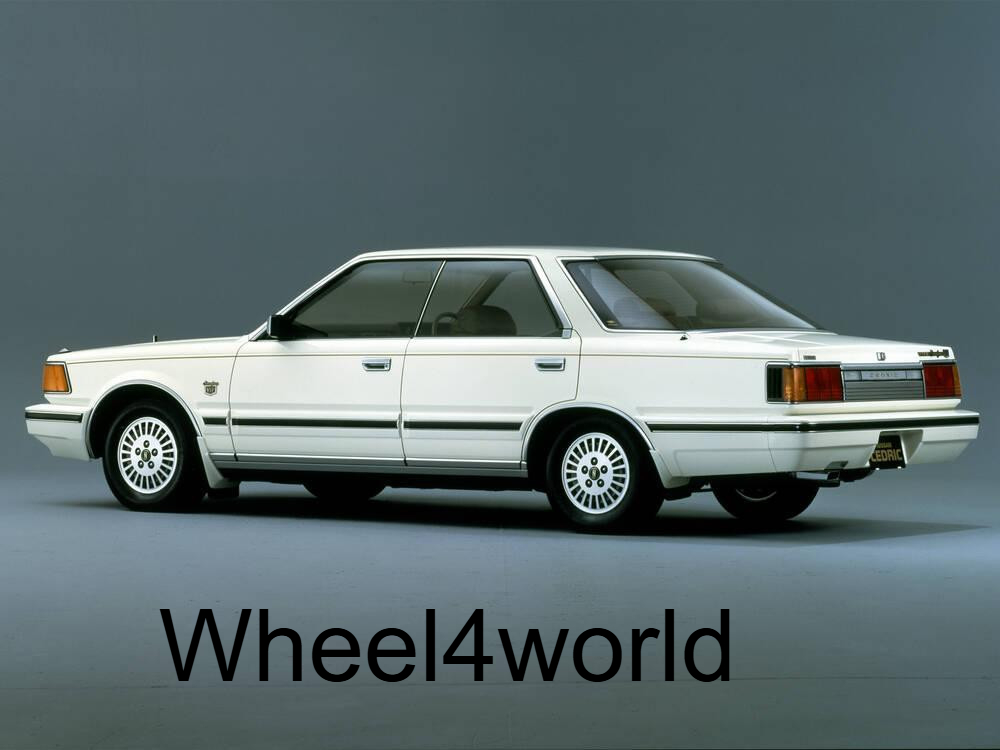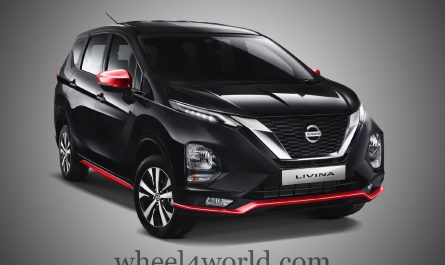
The Nissan Cedric is widely regarded as an iconic full-size sedan that has significantly contributed to the advancement of automotive technology and design. With a legacy spanning several decades, the Cedric embodies a fusion of luxury, technological innovation, and robust performance. This article provides a comprehensive analysis of the Nissan Cedric, exploring its historical development, technological advancements, cultural impact, and enduring relevance in the context of automotive history.
1. Historical Context and Inception of the Nissan Cedric
The genesis of the Nissan Cedric can be traced back to 1960, a period characterized by transformative shifts in the global automotive industry. During this era, Nissan sought to enter the luxury market by producing a vehicle that not only met the rigorous demands of performance and reliability but also reflected a commitment to superior craftsmanship. The Cedric was conceived as a full-size sedan that would cater to an affluent clientele, including business professionals and government officials, thereby establishing a benchmark for quality and prestige.
Early Development and Market Positioning
In its initial models, the Cedric was constructed on the robust Nissan Skyline platform, which provided a solid foundation for its design and engineering. The incorporation of a six-cylinder engine ensured a smooth and reliable performance, making the vehicle an attractive option for long-distance travel as well as urban commuting. Notable for its spacious interior and early adoption of amenities such as air conditioning, the Cedric was strategically positioned as a premium vehicle that combined practicality with luxury.
2. Evolution and Technological Advancements Through Generations
The Nissan Cedric underwent numerous refinements throughout its production cycle. Each successive generation introduced significant enhancements in design, performance, and technological features, reflecting the dynamic evolution of automotive engineering.
Second Generation (1965–1971): Embracing Modern Design
The second-generation Cedric, introduced in 1965, marked a shift towards a more modern aesthetic. This iteration featured streamlined lines and an aerodynamic profile, while offering an expanded range of engine options, including both inline-six and preliminary V6 configurations. The availability of an automatic transmission further broadened its appeal, positioning the Cedric as an ideal vehicle for both urban and long-distance driving.
Third Generation (1971–1979): Enhancements in Safety and Interior Refinement
The third-generation model, launched in 1971, was characterized by a more angular design and significant improvements in safety and comfort. Nissan implemented advanced braking systems, such as the introduction of front disc brakes, and upgraded the suspension system to ensure a smoother ride. Additionally, the interior received a comprehensive redesign with enhanced materials and layout, contributing to an elevated sense of refinement. This generation also marked the commencement of international exports, thereby extending the Cedric’s influence beyond Japanese borders.
Fourth Generation (1979–1983): A New Era of Sophistication
With the advent of the fourth-generation Cedric in 1979, Nissan introduced several sophisticated design features, including a prominent grille, a wider body, and an interior adorned with luxurious finishes. This generation integrated advanced electronic features such as power windows and improved climate control systems, which further underscored the vehicle’s appeal among discerning buyers.
Fifth Generation (1983–1987): Integrating Tradition with Modernity
The fifth-generation Cedric, launched in 1983, represented a critical evolution in both design and engineering. Drawing inspiration from contemporary European and American luxury automobiles, this iteration expanded the vehicle’s dimensions to enhance passenger comfort. The upgraded powertrain offered improved performance and fuel economy, with the Y30 model emerging as one of the most celebrated variants due to its balance of innovative design and engineering excellence.
Sixth Generation (1987–1999): A Pinnacle of Technological Integration
Introduced in 1987, the sixth-generation Cedric demonstrated Nissan’s commitment to merging luxury with advanced technology. This generation featured multiple trim levels and integrated premium amenities such as leather upholstery, heated seats, and state-of-the-art audio systems. The enhanced aerodynamic design and refined styling further solidified the Cedric’s status as a forward-thinking vehicle, meeting the evolving demands of its clientele.
Seventh Generation (1999–2004): Contemporary Design and Enhanced Safety
The seventh and final generation of the Cedric, which began production in 1999, marked a significant modernization of the model. Emphasizing fuel efficiency, performance, and safety, this generation incorporated contemporary design elements and advanced safety features, including airbags and anti-lock braking systems (ABS). Despite evolving market conditions and technological advancements, the Cedric continued to appeal to luxury car buyers, thereby maintaining its relevance in a rapidly changing automotive landscape.
3. Technological and Engineering Innovations
Beyond its aesthetic appeal, the Nissan Cedric has consistently exemplified engineering excellence. A critical examination of its technological innovations reveals several key areas in which the Cedric distinguished itself from its competitors.
Robust Engine and Powertrain Solutions
The Cedric was engineered with a range of engine configurations that prioritized both performance and reliability. Early models featured six-cylinder engines that delivered consistent power and smooth operation. In subsequent generations, the transition to more refined V6 engines provided enhanced performance metrics while maintaining efficiency. Innovations such as electronic fuel injection were progressively incorporated, ensuring optimal engine performance under varying driving conditions.
Advancements in Suspension and Braking Systems
Integral to the Cedric’s reputation for safety and comfort were its advanced suspension and braking systems. The introduction of front disc brakes in later models significantly improved stopping power, while sophisticated suspension systems contributed to a smoother and more controlled ride. These engineering advancements underscored Nissan’s commitment to delivering a vehicle that excelled in both performance and passenger safety.
Integration of Electronic Features and Interior Comfort
The Cedric was among the early adopters of electronic features that enhanced the driving experience. From the implementation of power windows and electronic climate control to the integration of modern audio systems, each generation of the Cedric reflected a progressive approach to automotive technology. Later models further incorporated driver-assistance technologies, including cruise control and enhanced dashboard instrumentation, thus reinforcing the vehicle’s status as a technologically advanced luxury sedan.
Aerodynamic Design and Fuel Efficiency
As global environmental concerns began to influence automotive design, Nissan responded by enhancing the aerodynamics of the Cedric. Improved body-line designs in later generations reduced aerodynamic drag and enhanced fuel efficiency, thereby aligning the Cedric with contemporary trends in environmental sustainability and performance optimization.
4. Cultural Significance and Societal Impact
The Nissan Cedric transcends its role as a mere means of transportation, having achieved symbolic status within both Japanese culture and the broader international automotive community.
Representation in Media and Popular Culture
Throughout its production history, the Cedric was prominently featured in various media, including television dramas, films, and video games. Its frequent appearance as the vehicle of choice for prominent public figures and high-ranking officials reinforced its image as a symbol of success and prestige. This media representation has contributed to the enduring cultural significance of the Cedric, positioning it as a benchmark for luxury and reliability.
A Status Symbol in Japanese Society
Within Japan, the Nissan Cedric emerged as a status symbol, frequently associated with business executives, government officials, and other influential figures. The vehicle’s design and performance characteristics resonated with a society that values precision, innovation, and reliability. As such, the Cedric became emblematic of the broader narrative of Japanese engineering excellence and modernity.
Enduring Appeal Among Automotive Collectors
Even after its discontinuation in the early 2000s, the Nissan Cedric continues to be celebrated by automotive enthusiasts and collectors worldwide. Well-maintained and restored models often command significant value at auctions and specialty dealerships. This continued interest is indicative of the Cedric’s lasting legacy as an exemplary model of automotive design and engineering.
5. Comparative Analysis: Nissan Cedric and Its Competitors
A comparative analysis of the Nissan Cedric against its contemporaries reveals several factors that contributed to its distinctive market position.
Performance and Reliability
The Cedric consistently delivered a balanced combination of performance and reliability that was superior to many of its competitors. Its robust engine configurations, coupled with advanced suspension and braking systems, provided a driving experience characterized by smooth acceleration and responsive handling. In many respects, the Cedric set a benchmark in the luxury sedan category, particularly in markets that placed a premium on reliability and overall driving comfort.
Technological Innovation
The Cedric was often at the forefront of technological innovation within its segment. While other vehicles in the same category eventually incorporated similar features, Nissan’s continuous advancements ensured that the Cedric frequently offered state-of-the-art technology ahead of its competitors. This proactive approach to innovation solidified its reputation as a leader in automotive technology.
Aesthetic and Design Considerations
From its inception, the Cedric was noted for its distinctive design, which balanced traditional automotive aesthetics with modern styling cues. While early models emphasized a classic, robust appearance, later generations evolved into sleeker, more contemporary sedans that appealed to a diverse range of buyers. This adaptability in design allowed the Cedric to maintain its relevance even as market trends shifted over time.
6. Technical Specifications: An In-Depth Overview
For scholars and automotive engineers interested in the technical underpinnings of the Nissan Cedric, a detailed examination of its specifications across various generations is instructive.
Engine Configurations
- Early Models:
The initial iterations of the Cedric were equipped with inline-six engines known for their smooth power delivery and consistent performance across various driving conditions. - Later Generations:
The evolution to V6 engines in subsequent generations provided improved acceleration and fuel efficiency. Technological advancements such as electronic fuel injection ensured that these engines met the demands of modern performance standards.
Transmission and Drivetrain
- Manual and Automatic Options:
Nissan offered both manual and automatic transmission systems to cater to a wide spectrum of driver preferences, thereby enhancing the Cedric’s versatility. - Advanced Drivetrain Features:
With ongoing technological improvements, later models incorporated adaptive transmission controls and optimized gear ratios, which contributed to a smoother and more efficient driving experience.
Interior and Safety Enhancements
- Luxury Amenities:
The interior of the Cedric consistently featured high-quality materials, including leather seating and wood trim, along with advanced audio and climate control systems. Such features underscored its status as a luxury sedan. - Safety Innovations:
The progression from basic braking systems to the incorporation of front disc brakes, airbags, and anti-lock braking systems (ABS) exemplifies the Cedric’s commitment to occupant safety throughout its production life.
Chassis and Suspension Systems
- Engineering for Comfort:
The Cedric’s chassis was engineered to optimize both stability and comfort, incorporating advanced suspension systems that effectively mitigated road imperfections and ensured a smooth, controlled ride.

7. Legacy and Future Implications
The discontinuation of the Nissan Cedric in the early 2000s has not diminished its influence on modern automotive design and technology. The Cedric’s legacy endures through its contributions to the evolution of luxury sedans and continues to inspire contemporary vehicle design.
Influence on Successor Models
The design philosophy and technological innovations pioneered by the Cedric have informed the development of subsequent Nissan models, including the Nissan Maxima and various vehicles within the Infiniti lineup. Modern iterations of these models reflect the Cedric’s foundational emphasis on luxury, performance, and advanced technology.
Preservation as a Collectible
For automotive historians and collectors, the Nissan Cedric represents a tangible legacy of Japanese engineering prowess. Its preservation as a collectible vehicle is testament to its enduring significance and the high regard in which it is held by automotive enthusiasts.
A Benchmark for Japanese Engineering
The success and reputation of the Nissan Cedric exemplify the broader narrative of Japanese innovation in the automotive industry. Its influence persists as a benchmark for quality, reliability, and technological advancement—a legacy that continues to shape contemporary design philosophies.
8. Conclusion: The Enduring Impact of the Nissan Cedric
In summation, the Nissan Cedric stands as a monumental achievement in the field of automotive engineering. Its evolution from a robust, early model to a technologically sophisticated luxury sedan reflects a trajectory of continuous innovation and design excellence. The Cedric’s historical significance, coupled with its lasting cultural impact and technical innovations, underscores its role as a seminal model in Nissan’s storied history.
For scholars, engineers, and automotive enthusiasts alike, the Nissan Cedric provides a compelling case study in the integration of luxury, performance, and technological progress. As the automotive industry moves forward into an era defined by electric propulsion and autonomous technologies, the legacy of the Cedric remains a touchstone—symbolizing the enduring pursuit of excellence that continues to define Japanese automotive engineering.


